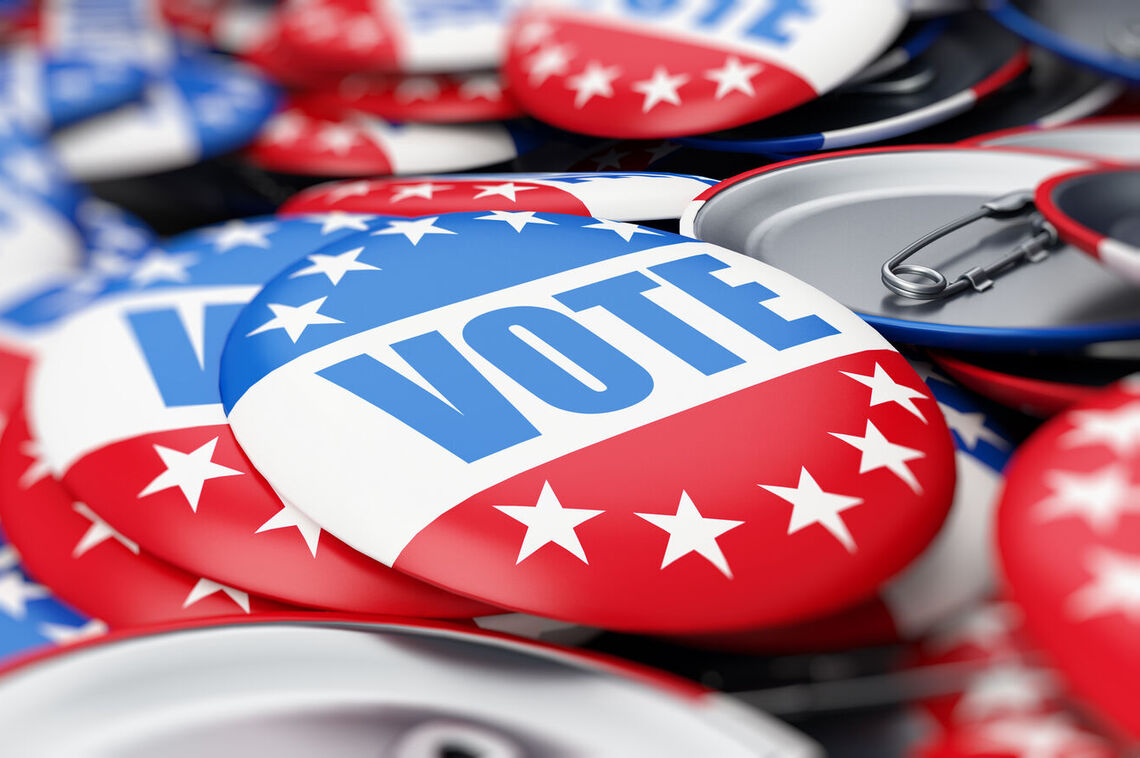F&M Stories
Election Reform Means Doing the Math
Mixing politics and religion is controversial, but mixing politics and math is American.
"In the U.S., we've had more experience with elections and experimentation than one might expect," said Elizabeth Maggie Penn of Emory University. "Probably every system of proportional representation in the world uses a formula invented by one of our Founding Fathers."
At Franklin & Marshall College's Sept. 16 Common Hour, the professor of political science and quantitative theory and methods said America's history of election reform is about relying on mathematics to accomplish fairness in apportioning districts and voting.
In cross-disciplinary spirit, Professor of Mathematics Nicholas Baeth and Stephen Medvic, the Honorable and Mrs. John C. Kunkel Professor of Government, proposed the event, "Beyond Paradoxes: Efforts at Past and Present U.S. Election Reform." Medvic also serves as the new director of F&M's Center for Politics and Public Affairs,
Asked Baeth before introducing Penn, "How many voters are familiar with the consequences of commonly used electoral formulas? The story of electoral reforms in the U.S. is remarkable. Its history dates back to the framing of the Constitution."
Electoral reform focuses on laws such as who can vote, election timing, ballot design and who can draw legislative districts. It also relies on electoral formulas.
"An electoral formula is the mathematical algorithm that we use to translate a collection of ballots into a winner," Penn said via Zoom.
However, mathematical formulas don't always mean that things will add up, fairly or effectively, which is why there is constant tinkering with legislative reforms.
"Voting anomalies are mathematically inescapable," Penn said.
In fact, economist Kenneth Arrow won, in part, the Nobel Prize for his Impossibility Theorem that "proves mathematically that it's going to be a mathematical impossibility to satisfy certain reasonable criteria," she said.
"There's no most fair system, there's no best system," Penn said.
Using charts and graphs, Penn discussed formulas, paradoxes, divisors, ranked choice voting and other initiatives in the more than 200 years of trial and error in trying to make sure citizens in districts are fairly represented and that a majority of voters have their voices heard.
"Mathematically, there is a lot of work that tries to analyze the fairness properties of various electoral formulas," she said.
In recent years, voting jurisdictions around the country have turned to cumulative voting – in elections for more than one seat, voters can vote for more than one candidate – and instant run-off elections, where voters can rank the candidates in order of preference.
In some cases, these systems were adopted by jurisdictions as a response to court rulings in voting rights lawsuits that found minority candidates lacked fair access. One such case was the school district in Amarillo, Texas, which had used block voting where each voter may choose up to a certain number of candidates.
With 25% of Amarillo Black and Hispanic, none had won a school board seat in decades. After the district adopted cumulative voting, Black and Hispanic candidates won seats and voter turnout increased 400%.
"Currently in the U.S., over 200 jurisdictions use these reform voting methods, these alternatives to plurality rule and block voting," Penn said. "I think this is incredibly exciting, really cool that there's been so much experimentation with systems that are actually very good systems."
Related Articles
May 6, 2024
Five Facts About Jason Cone ’99, Commencement Speaker
Get to know Jason Cone ’99, chief public policy officer of Robin Hood and former U.S. executive director of Doctors Without Borders.
May 3, 2024
Senior Spotlight: Olha Shapovalenko
A double major in mathematics and studio art, international senior Olha Shapovalenko made the most of her F&M experience. From designing theater costumes to discovering new artistic mediums, the College “enriched my creative vocabulary,” she said.
April 29, 2024
F&M in Harrisburg Offers Firsthand Look at Careers in Government
F&M students gained hands-on experience in public affairs through the F&M in Harrisburg Practicum, which matched students with internship opportunities.

